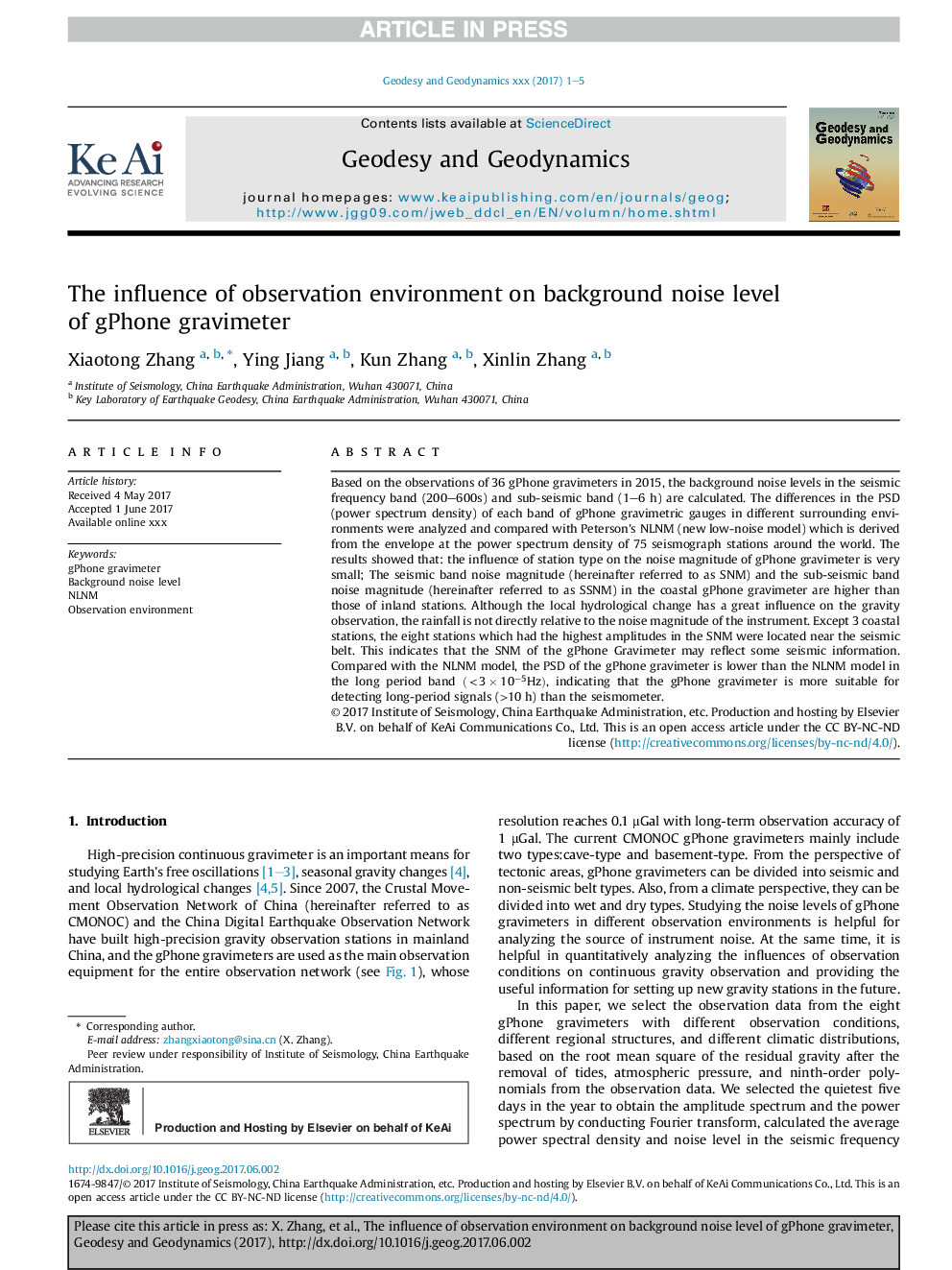| Article ID | Journal | Published Year | Pages | File Type |
|---|---|---|---|---|
| 8907895 | Geodesy and Geodynamics | 2017 | 5 Pages |
Abstract
Based on the observations of 36 gPhone gravimeters in 2015, the background noise levels in the seismic frequency band (200-600s) and sub-seismic band (1-6Â h) are calculated. The differences in the PSD (power spectrum density) of each band of gPhone gravimetric gauges in different surrounding environments were analyzed and compared with Peterson's NLNM (new low-noise model) which is derived from the envelope at the power spectrum density of 75 seismograph stations around the world. The results showed that: the influence of station type on the noise magnitude of gPhone gravimeter is very small; The seismic band noise magnitude (hereinafter referred to as SNM) and the sub-seismic band noise magnitude (hereinafter referred to as SSNM) in the coastal gPhone gravimeter are higher than those of inland stations. Although the local hydrological change has a great influence on the gravity observation, the rainfall is not directly relative to the noise magnitude of the instrument. Except 3 coastal stations, the eight stations which had the highest amplitudes in the SNM were located near the seismic belt. This indicates that the SNM of the gPhone Gravimeter may reflect some seismic information. Compared with the NLNM model, the PSD of the gPhone gravimeter is lower than the NLNM model in the long period band (<3Ã10â5Hz), indicating that the gPhone gravimeter is more suitable for detecting long-period signals (>10Â h) than the seismometer.
Keywords
Related Topics
Physical Sciences and Engineering
Earth and Planetary Sciences
Earth-Surface Processes
Authors
Xiaotong Zhang, Ying Jiang, Kun Zhang, Xinlin Zhang,
